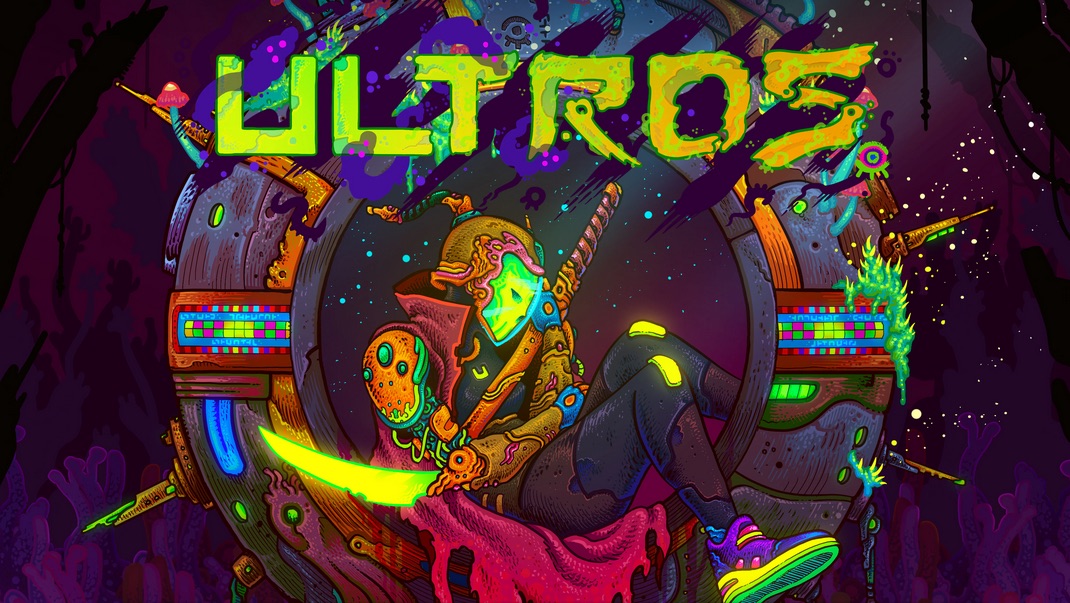
There is no genre that indie game devs have played out more than metroidvanias or roguelikes. Sometimes the genres combine and while some exceptional games play to either strength, there is no denying that digital stores won’t have any shortages of these kinds of games for decades to come.
Ultros initially sells itself as a rogue-lite metroidvania, with unbelievably lurid visuals and bizarre alien designs. While Ultros is certainly very otherworldly with its visuals and it is a metroidvania with some rogue-lite elements, the reality is that it is as much a rogue-lite as The Legend of Zelda: Majora’s Mask.
How can this strange and weird-looking metroidvania stand out from the crowd? Is there more to it than its outlandish art and animation? What is it about? Find out in our Ultros review!
Ultros
Developer: Hadoque
Publisher: Kepler Interactive, Maximum Games
Platforms: Windows PC, macOS, PlayStation 4, PlayStation 5 (reviewed)
Release Date: February 13, 2024
Price: $24.99 USD
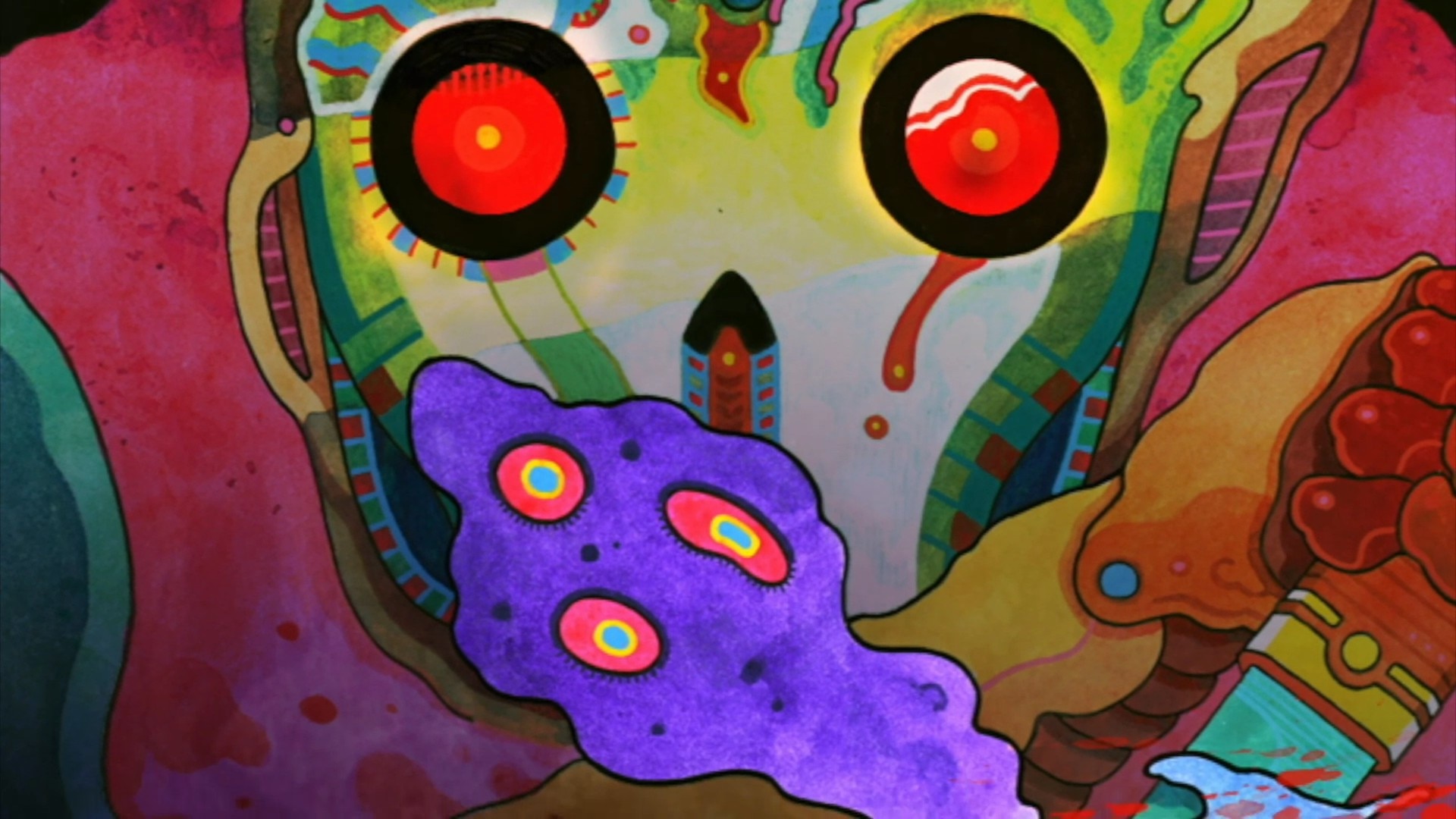
Ultros is a very surreal metroidvania with big ideas about cycles and is steeped in themes that revolve around femininity. Not in a crass, obese, shaven-head gender-studies sense, but more in a gnarled David Cronenbergian way. The story is told in a vague and hands-off approach which rarely gets in the way of the action and invites speculation.
Ultros is a game that understands that life can be a mixture of gross and beautiful at the same time. Anatomy is profoundly complex and the system that creates living things is penetrative and violent, yet it is in us all. Our insides are often seen as disgusting, yet we can’t live without them.
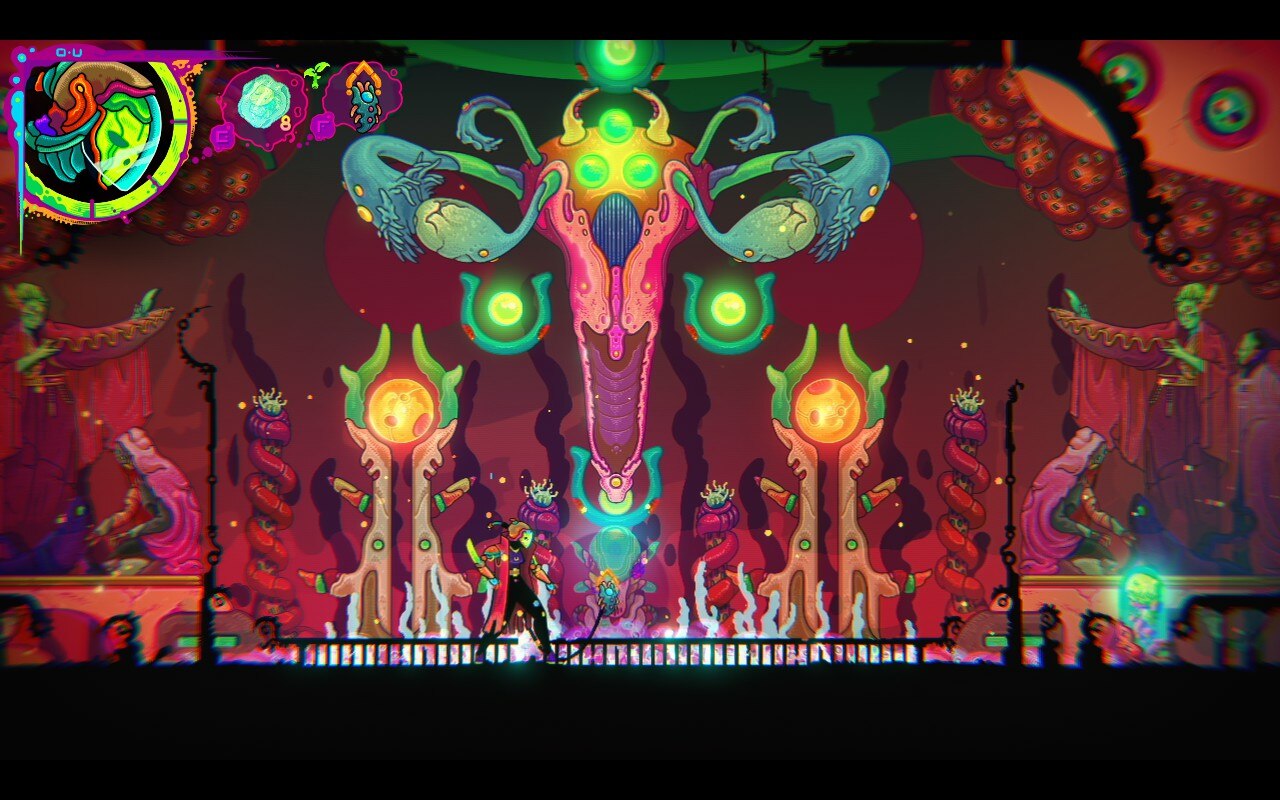
The extensive yonic imagery in Ultros and the lymphy, vibrant technicolor world it is set in, illustrates profound motherly concepts and spiritual awakening. The protagonist is like Samus Aran; a silent female warrior who battles space creatures that defy human understanding. She is seemingly trapped in a time loop, but it would appear time itself is fragile and with every cycle, something changes.
The “cycles” are the main hook to the gameplay in Ultros. Traditionally, metroidvania games have players progress with new abilities to reach new areas. The goal is to destroy eight sarcophagi, and whenever one is destroyed, the hero can start a new cycle. Not all of them are reachable at first – some are, but like any metroidvania, the hero needs to gain some new abilities.
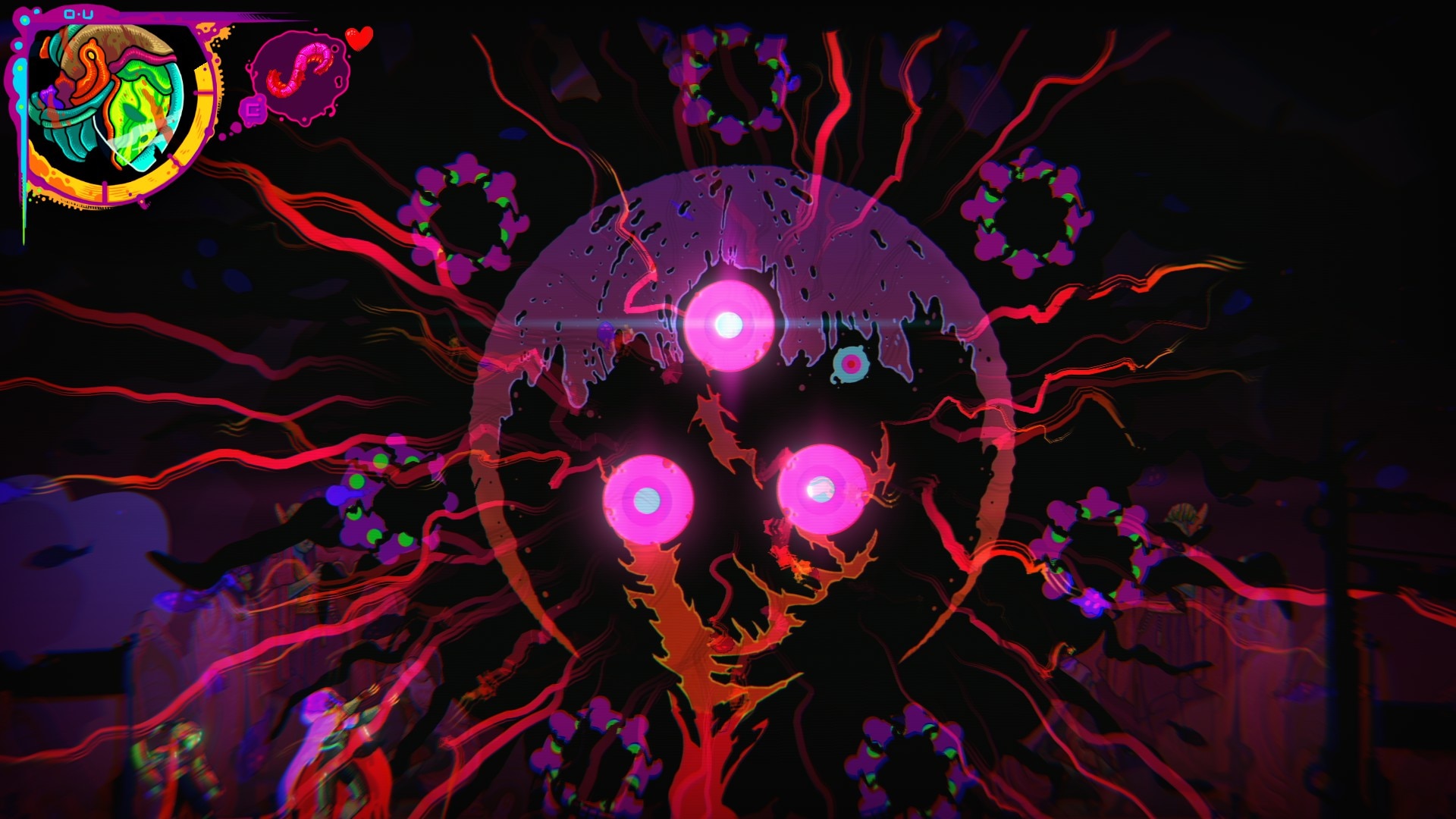
There are two kinds of abilities in Ultros. Cortex abilities are learned via a skill tree by spending the stats gained by eating the guts of defeated enemies. The sustenance each has its values and certain parts are more potent if players defeat foes with stylish and clean kills.
There is also an anti-grinding mechanism in place; enemies don’t respawn until the start of a new cycle. All cortex abilities are reset unless a memory marker is placed on the ability on the tree, which makes gameplay less tedious since it is possible to retain some powers without having to return to areas to harvest the gore of the same foes.
After a few cycles, it becomes very easy and quick to regain the protagonist’s cortex abilities. Some expand the combat prowess and make fighting more fluid. Other cortex abilities can reveal the location of gardening points for fruits which are also used to build stats to learn abilities. Since enemies don’t respawn until a new cycle, getting around also becomes very fast and efficient. You won’t waste time with enemies that are beneath you.
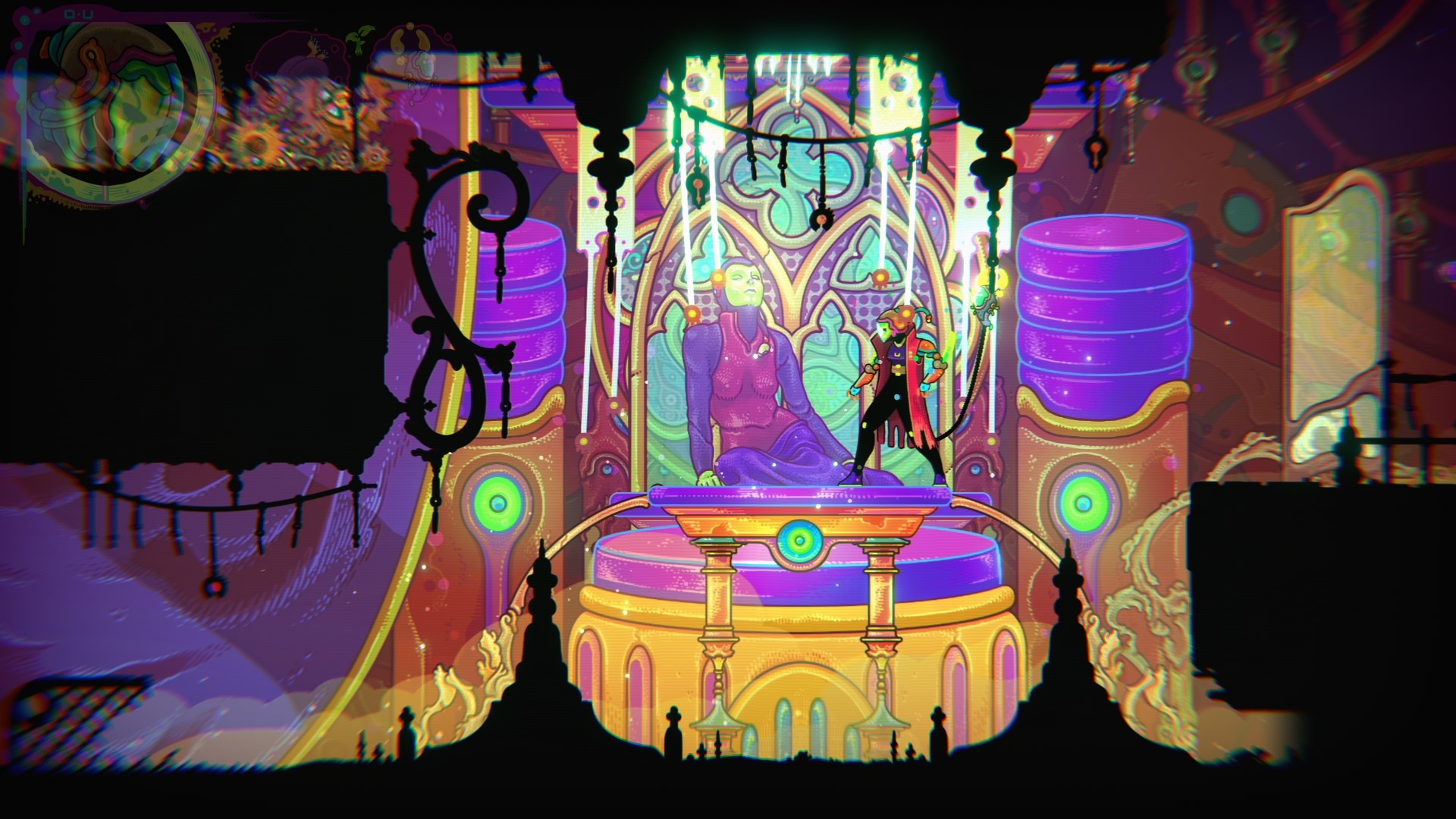
Cortex abilities, while useful, are optional. It is feasible to make a lot of progress without any. It would be extremely challenging, but doable. Many of them are almost useless or are too situational to ever be handy.
The other abilities separate from the cortex are the extractor techniques which are tied to the device that the protagonist carries. It gains new abilities during story progression and while you do lose it at the start of every cycle, it always remembers everything and it is always acquired in the same location.
The extractor is for abilities like double jumping or the usability of the mushroom jump-pads. Pretty much all platforming-based moves are tied to this device and are required to reach all the bosses and sarcophagi.
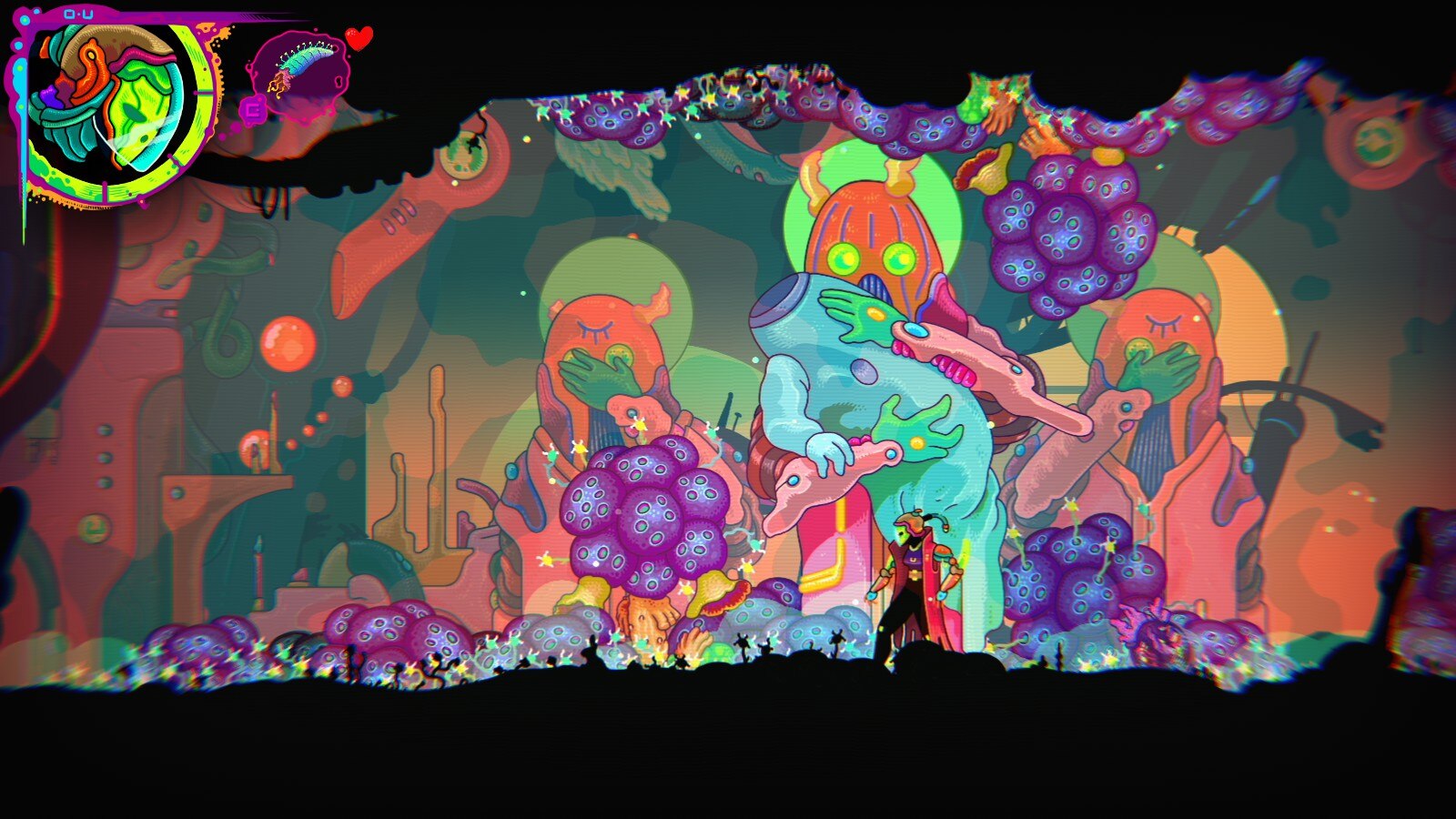
Ultros controls responsively and feels as tight as any of the best metroidvanias on the market. The combat system is entirely melee-focused and the hero fights like a souped-up Guyver with elbow blades. She dodges and follows up with a flurry of attacks when timed right. The effect is visceral and bloody.
There are many intense boss battles and perfect dodging platforming is key to victory. Ultros feels a lot like Super Metroid with its sense of pacing and gravity. The hero has very tight controls and her jumps are just floaty enough to have some control of her in mid-air. There is a lot of care put into her playability and how she moves throw the world.
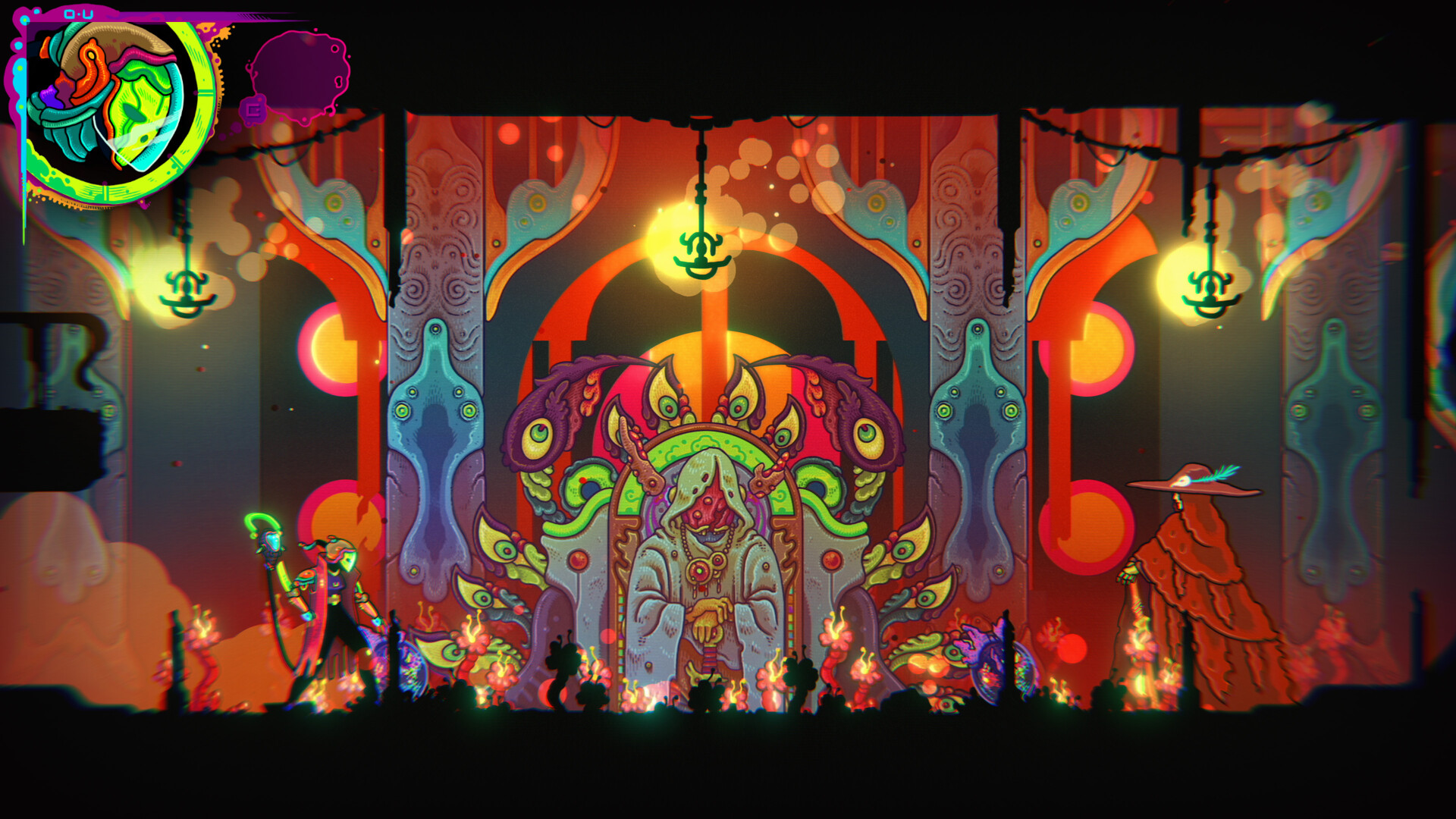
Ultros’ gameplay is unique among metroidvanias, but it plays second fiddle to its graphics. There is nothing that looks like this game. It resembles a tipped-out Heavy Metal magazine comic with some elements of Art Nouveau, French new-wave design, and Roger Dean.
The imagery borders on being nightmarish and veers into what you would get if H.R. Giger met Cheech and Chong. Colors are intense and everything looks and feels organic. The varied weight of the line quality in the art implies depth and volume on top of the shading. There is a real sense of gooeyness to the world and compounded with the squishy sound design, it’s a world that you can feel oozing between your toes.
The backgrounds can become a bit too busy at times which makes it difficult to parse the environment for platforms. For the most part, solid platforms are black silhouettes, but some mid-air surfaces blend into the background and don’t pop out enough when everything looks like you took a hit from Hunter Thompson’s little brown bottle.
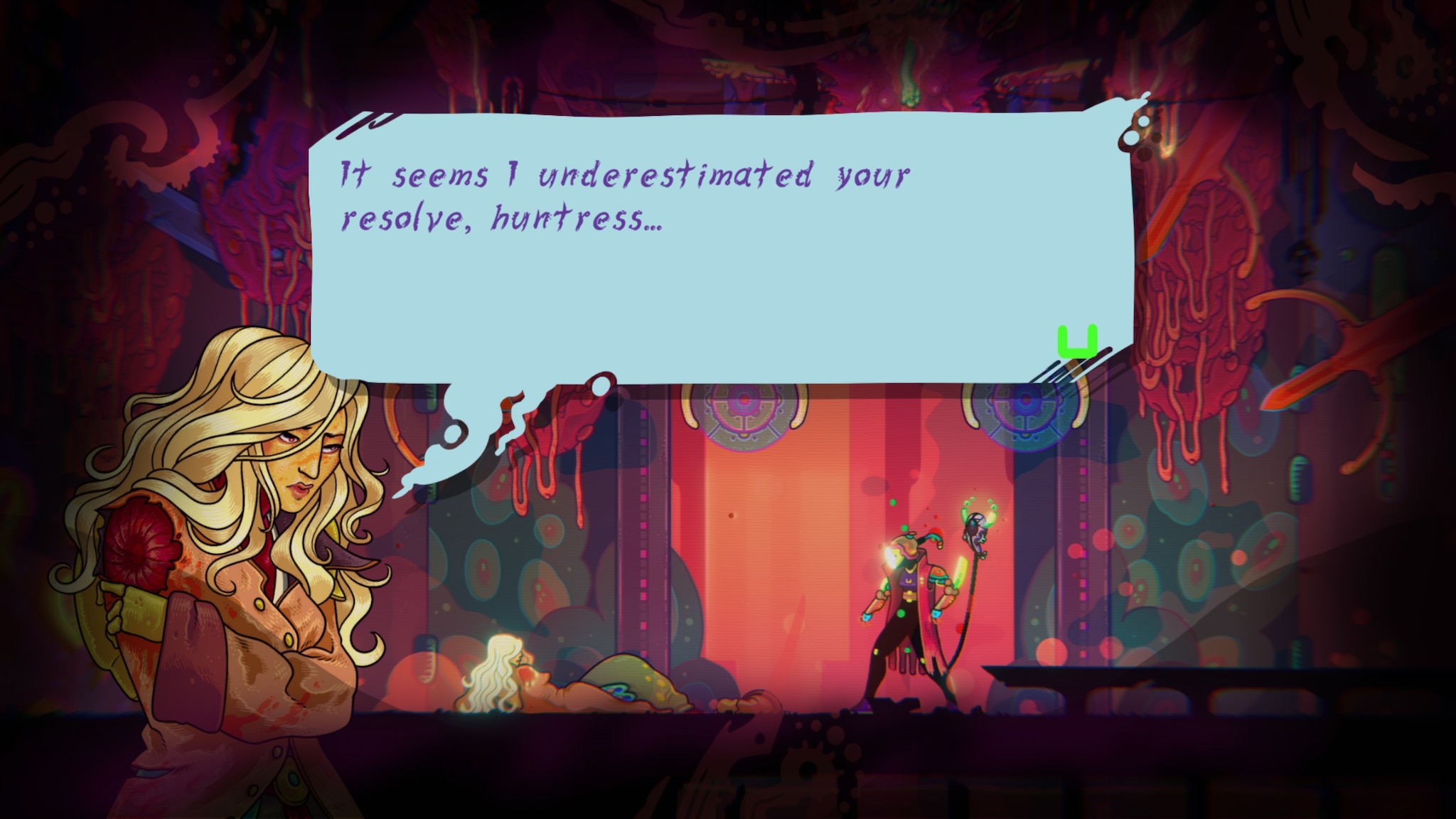
Ultros presents a novel take on the metroidvania genre with its cycle system, which alters the levels as you progress through the story. The roguelite elements are so light, that they practically don’t interfere, so anyone who is put off by rogue gameplay will find Ultros to be very playable.
Ultros transcends the cynicism often found in modern metroidvanias. It’s more than just competent – it’s a game with a soul. Created by passionate artists with a clear vision of the cycle of life, Ultros boasts one of the most unique visual styles in its genre. It isn’t a forgettable experience; Ultros leaves a lasting impression with solid gameplay to back it up.
Ultros was reviewed on PlayStation 5 using a code provided by Kepler Interactive. You can find additional information about Niche Gamer’s review/ethics policy here. Ultros is now available for PC (via Steam), macOS, PlayStation 4, and PlayStation 5.